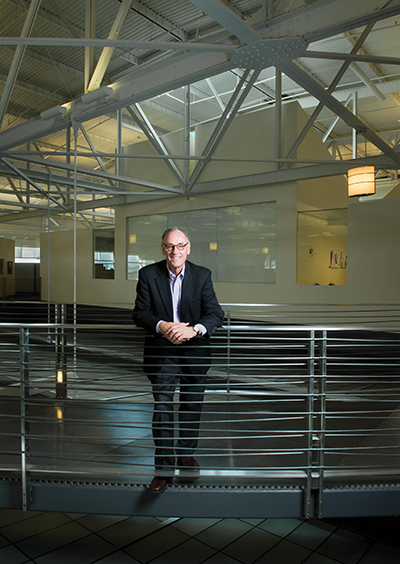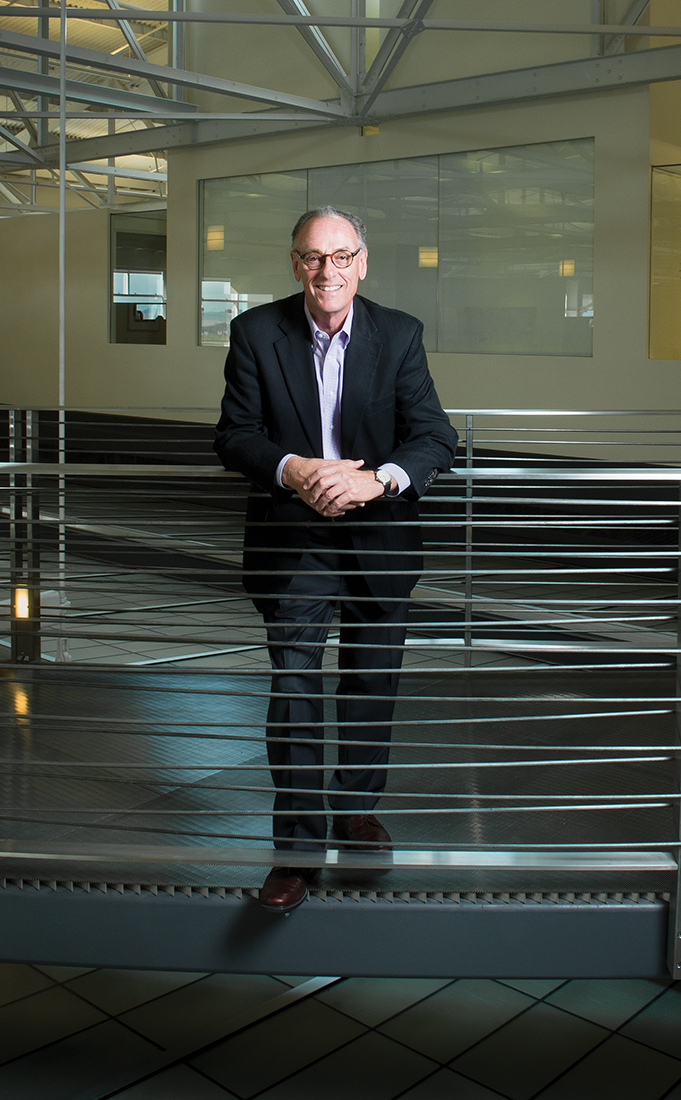 MAKING SURE $65 million is distributed each year to the most worthy causes is the job of Thomas “Tom” Peters, president and CEO of the Marin Community Foundation. The foundation’s goal is “to make a difference in the lives of others through thoughtful and effective philanthropy.” Sounds noble, doesn’t it? — especially during this season of giving.
MAKING SURE $65 million is distributed each year to the most worthy causes is the job of Thomas “Tom” Peters, president and CEO of the Marin Community Foundation. The foundation’s goal is “to make a difference in the lives of others through thoughtful and effective philanthropy.” Sounds noble, doesn’t it? — especially during this season of giving.
What follows, in a nutshell, is how the Marin Community Foundation, with assets of $1.6 billion, came into existence, where that more than a billion-and-a-half dollars came and continues to come from, and how Peters, a native San Franciscan with a doctorate in psychology and health science from the University of Minnesota, came to lead California’s second-largest community foundation (the largest, no surprise, is the Silicon Valley Community Foundation, with $6.5 billion in assets). Most important, we’ll find out where some of the annual distribution winds up.
The story starts in 1975, when Ross resident Beryl Buck died and left an estate of nearly $10 million to “benefit the people of Marin County.” When most of that estate turned out to be stock in an obscure oil company later purchased by Shell Oil, and its value increased significantly, San Francisco managers claimed the amount was too great to be spent all in Marin. The case settled in 1987, and the Marin Community Foundation was created, as were three other entities that would serve not only the residents of Marin but also “all of mankind.” These are the Buck Institute for Research on Aging, the Buck Institute for Education, and Alcohol Justice, a San Rafael–based nonprofit.
That bequest launched a foundation whose funding mostly comes from two major sources, the Buck Family Foundation (grants from this entity benefit Marin causes) and an aggregate of funds commonly called “donor advised funds.” The latter grouping is composed of approximately 500 individuals and families, from Marin and beyond (these funds can go anywhere in the world, but more than half go to Marin nonprofits and schools). Each entity has assets totaling approximately $800 million.
With a doctorate in medicine and psychology from an out-of-state school, how did you progress to presiding over a foundation with $1.6 billion in assets? I’m a Bay Area guy. I grew up just outside the city and graduated from San Francisco State. Then I headed to University of Minnesota, drawn by its stellar reputation and the fact that there were six major hospitals on campus. For me the move from the Bay Area was a physical as well as an existential shock. I think I provided comedic relief for people. Here comes this western boy full of hippie spirit — and I nearly froze to death. It was 32 degrees below zero and the oil in my little Renault froze up. But the campus kept me there for five years. As soon as I finished I got back in my old Renault and drove almost nonstop back to San Francisco. About a year later, it was 1974, I took a job with the City of San Francisco Health Department. In the ‘80s, I was fortunate to become chief of staff, overseeing some 6,000 staff members as we dealt with the earliest years of the HIV/AIDS epidemic, a billion-dollar budget, S.F. General and Laguna Honda hospitals, paramedic services and five large community clinics.
When did you arrive in Marin County? It was in 1991, when I was named director of the county’s health and human services department. I served in that position — continuing to really enjoy public service — until 1998, when the directors of the Marin Community Foundation came knocking on my door. So I jumped the fence from the public to the private sector.
Was the switch difficult? At the time, I didn’t have the good sense to realize what a change it would be. For me, it was a change for the better. The missions and themes of the Marin Community Foundation are very compatible with what I’ve wanted to do all my life. I’m not dealing with just health and disease issues, but also with housing, education, the arts, the environment and economic development. It deals with the way life really is for families and the community. I am as happy as I can be.
Your title at the Marin Community Foundation is president and CEO. Why? At first, I was a bit uncomfortable with that overinflated title. But over the years I’ve come to understand it better. The CEO part relates to running a pretty good-size organization. We have over 50 employees, an annual budget of $9 million, over 500 funds and more than a billion and a half in funds to oversee. I look at running the Marin Community Foundation much as I would [running] a Fortune 500 company. As for my role as president, that involves trying to ensure that everyone, both inside the organization and in the surrounding community, knows why we are doing what we are doing, emphasizing core values. The same principles of creativity, excitement and synergy exist for both roles.
What is the hardest part of your job? It’s the emotional pang of seeing the number of folks — children and families particularly — right here in Marin who are struggling mightily in their everyday lives. Struggling with finances and jobs, with their health and where to live. The single hardest moment is seeing a young child brimming with innate skills and infectious enthusiasm coming face-to-face with the impediments of his or her challenged environment, grappling with the fact that the doors of opportunity are swinging shut.
And the best part? Hands down, it’s the opportunity to engage with individual donors and their families. They’re accomplished people across varied fields — business, finance, science and the arts. They have resources to share and the heart to do so. Many also exemplify [the term] “world citizens,” with deep philanthropic and humanitarian interests here in Marin as well as nationally and internationally. What an honor and a treat to know them.
Are you comfortable sharing some personal information? Sure, I just turned 71 and seldom miss my daily swim or a bayside hike. I feel as good as I’ve ever felt. I’m the proud father of three adult children, two of whom have earned Ph.D.s and the third is working on her master’s. As for where I live, when I first came to Marin, almost 25 years ago, I “temporarily” moved into a two-bedroom condominium just to live in until I could find more permanent housing. Well, I fell in love with the place and I’m still there. And lucky me, I have a wonderful sweetheart in my life as well.
Where does some of that $65 million in funding that you distribute go? Can you list a dozen recipients? Sure, but it will just be examples of the scores of worthy causes MCF supports. They include Marin Community Clinics in Greenbrae, Novato and San Rafael; 10,000 Degrees, which enables less fortunate but deserving Marin youth to attend college; numerous affordable housing projects, including Mount Burdell Place in Novato and San Clemente Place in Corte Madera; MALT in West Marin; Bread and Roses, the Corte Madera group that brings music to hospitals and seniors; Homeward Bound, the terrific housing and educational facility for the homeless; the Mountain Play; Whistlestop Senior Services; the Marin Child Care Council; and the Early Childhood Education Quality Improvement Project. Outside Marin, what quickly comes to mind are the Human Rights Watch; Planned Parenthood of America and Heifer International. And again, those are just a few of the causes and concerns the Marin Community Foundation grants. I’m humbled and privileged to have this job.


